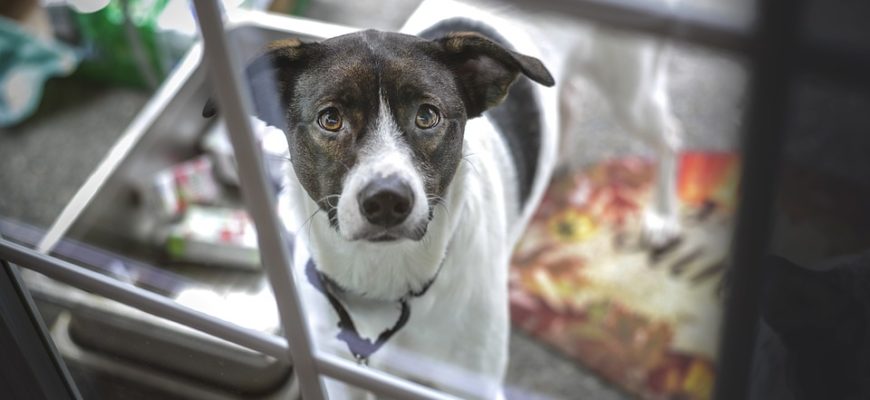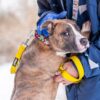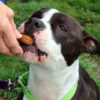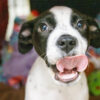Remember that you and your new dog need some time to learn each other’s signals and routines. Even if he was housetrained in his previous home, if you don’t recognize his “bathroom” signal you might miss his request to go out, causing him to eliminate indoors. Therefore, for the first few weeks after you bring your new dog home, you should assume your new dog isn’t housetrained and start from scratch.
Establish a Routine
- Take your dog out at the same times every day. For example, first thing in the morning when he wakes up, when you arrive home from work, and before you go to bed.
- Praise your dog lavishly every time he eliminates outdoors. You can even give him a treat. Praise and give him a treat immediately after he’s finished eliminating, not after he comes back inside the house.
- Choose an outside location to be the bathroom spot. Always take your dog, on a leash, directly to the bathroom spot. Take him for a walk or play with him only after he has eliminated. If you clean up an accident in the house, take the soiled rags or paper towels and leave them in the bathroom spot. The smell will help your dog recognize that area as the place where he is supposed to eliminate.
- While your dog is eliminating, use a word or phrase, like “go potty,” that you can eventually use before he eliminates to remind him of what he’s supposed to be doing.
Supervise, Supervise, Supervise
Don’t give your dog an opportunity to soil in the house. He should be watched at all times when he is indoors. You can tether him to you with a six-foot leash, or use baby gates to keep him in the room where you are. Watch for signs that he needs to eliminate like sniffing around or circling. When you see these signs, immediately take him outside, on a leash, to his bathroom spot. If he eliminates, praise him lavishly and reward him with a treat.
Confinement
When you’re unable to watch your dog at all times, he should be confined to an area small enough that he won’t want to eliminate there. It should be just big enough for him to comfortably stand, lie down and turn around in. This area could be a portion of a bathroom or a laundry room, blocked off with boxes or baby gates. Or you may want to crate train your dog and use the crate to confine him (see: “Crate Training Your Dog”). If your dog has spent several hours in confinement, when you let him out, take him directly to his bathroom spot and praise him when he eliminates.
How to handle house-training mistakes
Interrupt mistakes as they are happening. Don’t be too harsh or your dog will be afraid to go in front of you (this is when dogs start sneaking away to go in another area). After interrupting the behavior, hustle him outside to the potty area. Praise if he finishes there. Clean up the indoor mess with an enzymatic cleaner to remove protein residue that might attract him to the same place again. Never punish. If your dog made the mistake one hour or five seconds ago, you are too late. Don’t rub his nose in his own mess or physically punish him, this will simply make him afraid of you, and he won’t understand why you do it. You must catch him in the act for the interruption to work. If you’ve failed to see it happen, try keeping him on leash in the house so you can be present the next time and take him out when he shows signs of needing to go.








